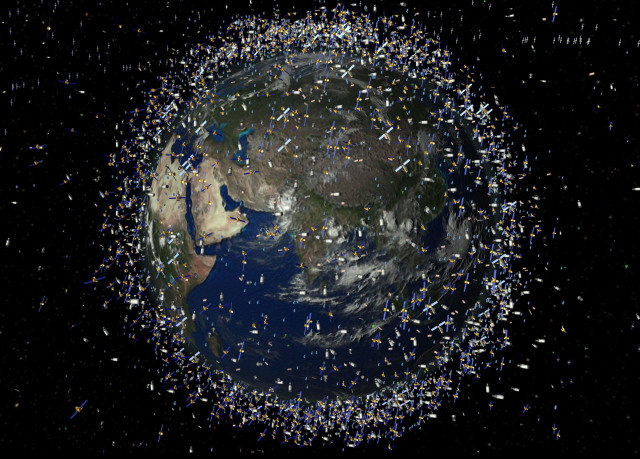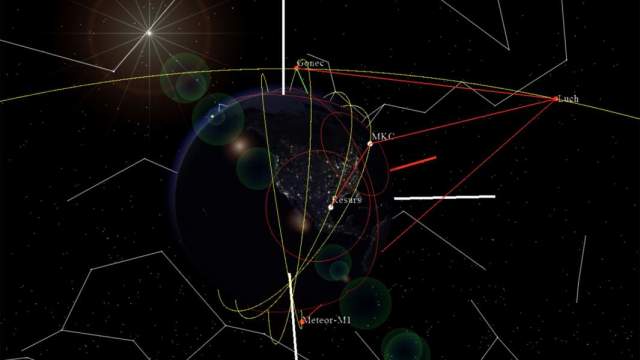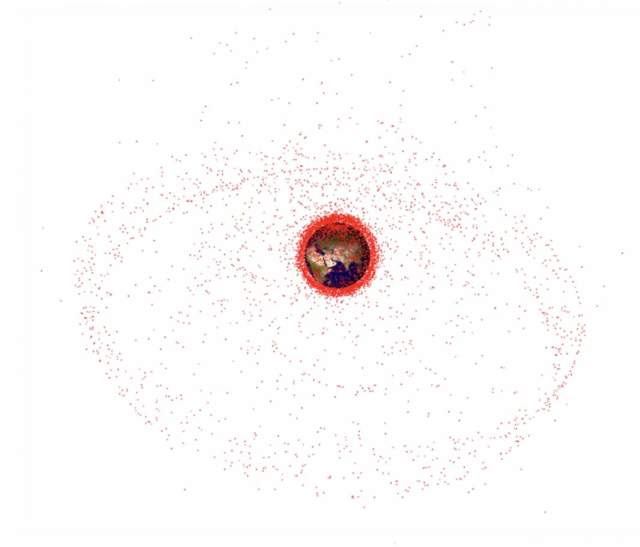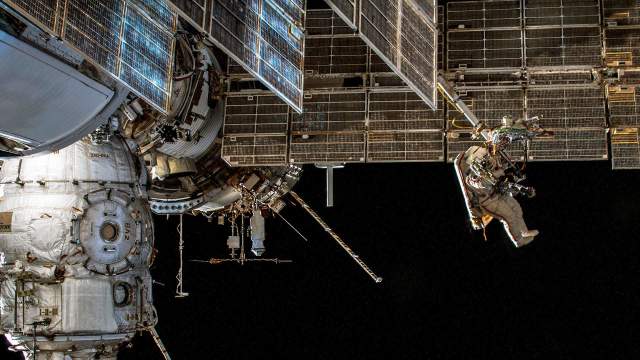How will the system for monitoring the movement of fragments smaller than 10 cm in orbit be arranged
Russian scientists are creating a monitoring system in the near-Earth space of debris less than 10 cm in size. Despite its small size, a collision with such an object of spacecraft almost always leads to an accident. Experts have already created a mathematical model of the location of the micromusor in orbit. With its help, they intend to calculate the number and optimal location of the equipment needed to control this danger. In the future, data from the observation means will also be loaded into the model and get a realistic picture of what is happening around the Earth. According to experts, this will allow choosing safe orbits for the ISS, spacecraft and satellites.
Less is not better
Specialists of the Moscow Aviation Institute (MAI) are working on creating a system for monitoring space debris less than 10 cm in size in near-Earth space. Despite its small dimensions, a collision with such spacecraft objects at high speed inevitably leads to an accident. Previously, scientists created a mathematical model of the location of particles in orbit. Its data can be used to calculate safe orbits for manned spacecraft and satellites. The project is being implemented with the support of the Russian Science Foundation.
— Due to high collision speeds, objects from 1 to 10 cm in size carry risks for spacecraft up to complete failure. Even such a protected object as the ISS can be penetrated by a particle with a diameter of more than 1.3 cm at a speed of about 10 km/s. Objects with a diameter of less than 1 cm individually are not able to penetrate the protective screens of the ISS, because their kinetic energy is small. But there are much more of them themselves, which is why the frequency of collisions with them is significantly higher, they are able to reduce the functionality of spacecraft and their subsystems, - said the author of the project, associate professor of the Department of "System Analysis and Management" of MAI Igor Usovik.

Associate Professor of the Department of "System Analysis and Management" MAI Igor Usovik
Image source: Photo: MAI Press Service
Accidents due to small-sized fragments occur regularly. According to representatives of Roscosmos, one of the reasons for the depressurization of the International Space Station at the end of 2022 could be a collision with debris. In 2013, after contact with a small-sized object, the Russian nanosatellite "Blitz" failed. In 2016, a centimeter particle pierced the solar panel of the European Sentinel-1A spacecraft. As a result, fragments larger than 5 cm flew away from it . In 2019, presumably, there was a collision with the micromusor of the Russian hydrometeorological satellite Meteor-M, which caused it to be temporarily inoperable.
The problem is getting more complicated every year. The number of new vehicles that are being put into orbit is continuously increasing. According to the United Nations Office for Outer Space Affairs, in 2020, humanity put 1,274 new satellites into orbit, and in 2022 - already 2,474. After serving their time, these devices turn into garbage, which poses a collision threat to existing devices. All large objects larger than 10 cm are closely monitored and catalogued. Now there are more than 30 thousand of them . However, there is no full-fledged tracking system for smaller, but still very dangerous particles in the world.

Image source: Photo: Social networks
The right point of view
Currently, data on small-sized debris is collected using a very limited number of ground-based radar stations and satellite vehicles in space. However, this information is not enough to build a complete picture of how small debris particles are located around the Earth. At the first stage, the model created earlier by scientists will be used to determine the required number, types and optimal location of equipment that is necessary to build a full-fledged monitoring system.
To solve this problem, MAI will also model technical means that can be used for observations. The initial data will be the characteristics of existing and currently being developed systems. In addition to the types of devices already in use, these will be ground-based and orbital optical telescopes and contact sensors installed on spacecraft and satellites.

Photo: MAI Press Service
Image source: iz.ru
— Our job is to calculate how much and what kind of means will be required to monitor space debris from 1 to 10 cm and less than 1 cm in size, for the use of this data in the future in the design of space systems, — said Igor Usovik.
After all the necessary monitoring tools have been installed and started working in accordance with the calculations, the model can be fed with the necessary amount of factual information. This will allow you to get a real picture of what is happening in orbit. These data are supposed to be used in the manufacture of an updated Russian automated warning system for dangerous situations in near-Earth space, the Milky Way, the creation of which Roscosmos should complete by 2035.
With great energy
A monitoring system for small-sized debris is necessary, since it moves at very high speed in different orbits and therefore can severely damage spacecraft. In any accident, there are a lot of fragments, which then knock everything down. So a whole cloud of garbage is formed. In orbits from 600 km, where satellites are located, the object can be preserved for decades, and 1000 km — hundreds of years, Andrei Ionin, a corresponding member of the Russian Academy of Cosmonautics, explained to Izvestia.
— Now satellites are being designed according to an open scheme, so their equipment is not protected in any way. A spacecraft is a complex technical system that can disable even a small object if it moves at a speed of several kilometers per second," he said.
The ISS is in a lower orbit than the satellites. This altitude is 350-400 km . There are still remnants of the atmosphere. The debris is slowed down by it and therefore remains in orbit for months. However, he still poses a serious danger, the specialist added.

Photo: MAI Press Service
Image source: iz.ru
— The high speed at which debris particles move in orbit can lead to fatal consequences in a collision. They can penetrate the skin of the device. For example, when oncoming traffic of debris and a satellite flying at a speed of 8 km/s, we get a speed of 16 km/s. And this is already a very large amount of energy in the case of contact," said Alexander Zheleznyakov, an expert in the space industry.
It is important to know the location and behavior of such objects in order to avoid excesses when creating orbital stations and putting other equipment into orbit, the specialist stressed.
Denis Gritsenko

